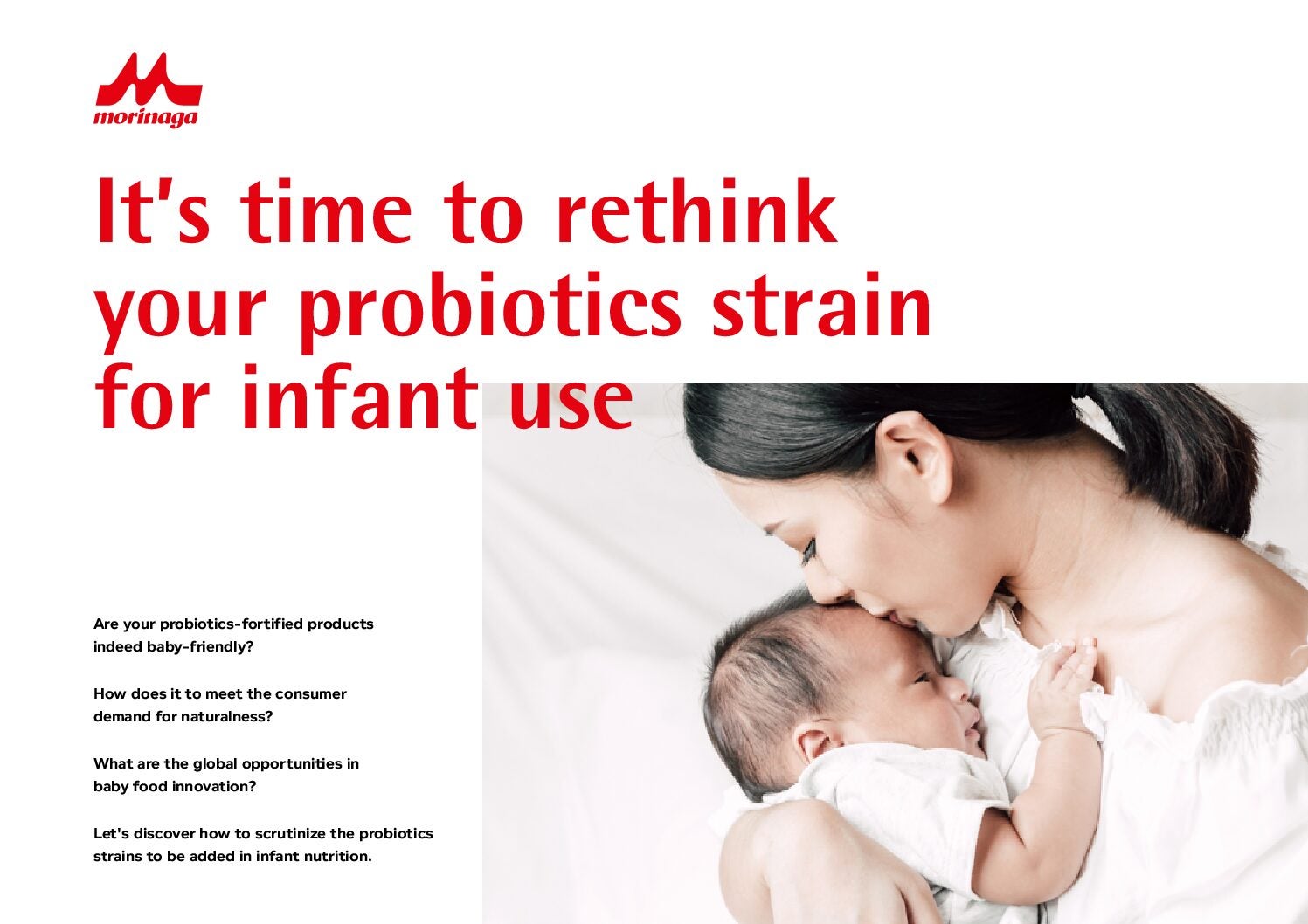
Despite medical advances and lower baby mortality rates, there is a concerning trend of growing baby ill health. The World Health Organization (WHO) estimates that about 20 million babies are born with a low birth weight (less than 2.5kg/5.5lbs) each year.[i] Meanwhile, the number of infants affected by early-life complications and chronic allergic diseases is on the rise. While infant survival rates have improved dramatically over the past few decades – UNICEF finds that the global under-five mortality rate has declined by more than 51% since 2000[ii] – greater efforts must be made to address baby wellbeing.
To this end, there is increasing focus on the role of the gut.
Scientific research is increasingly finding that dysregulation in the gut microbiome – the collection of microorganisms residing in the gastrointestinal tract – is likely to lead to the infant suffering from pathologies and increases the chances of the infant suffering from ill health later in life. Conversely, good gut health in a baby is increasingly thought to support their overall wellbeing and pave the foundation of better health as they get older.
The essential role of diet in good baby health
Gut colonisation can be affected by several factors in early life. These include type of birth delivery, diet – whether the baby is breast or formula fed -, gestational age and environmental factors.
Infants who develop healthy microbiomes dominated by bifidobacteria not only reduce their risk of developing allergic diseases and conditions but will also benefit in later life from improved immune system development and digestive health as well as reduced risk of allergies, obesity, and metabolic disorders. This is according to Morinaga Milk, a leading dairy company in Japan best known for its extensive research and development of original functional ingredients, specifically probiotics and postbiotics. The Tokyo-based firm has been researching the importance of gut bifidobacteria to human health for more than 50 years and has developed three unique probiotic strains that are appropriate to add to infant nutrition products, including infant formula.
Junichi Minami, manager of the marketing strategy team at Morinaga Milk, is excited by growing consumer awareness of the importance of the gut microbiome to infant health, which is pushing infant formula brands to take note. For example, she points to the recent incorporation of human milk oligosaccharides (HMOs) into infant formula.
“Found naturally in human breast milk, HMOs promote the growth of beneficial gut bacteria, including bifidobacteria, and support healthy gut development,” says Wong, adding: “This finding is influencing innovation strategies in baby formula development, with a particular focus on the benefits of human-residential bifidobacteria (HRB) probiotic strains, which mimic those selected by human breast milk. The natural choice of breast milk can’t be wrong. It’s the gold standard in infant nutrition.”

In a whitepaper, It’s time to rethink probiotics for infant use, Morinaga Milk argues that following birth, the bifidogenic factors of breast milk, like HMOs and lysozyme, drive the colonisation of highly beneficial infant-type HRB, including the strains of B. longum, B. infantis, B. breve, and B. bifidum. It is these strains that probiotic developers should be selecting to add to infant food products, according to Morinaga Milk.
“In the case of infant formula, the composition of breast milk has been a key research area for the development of formulas that suit the nutritional needs of infants,” says Wong. “For instance, many brands have incorporated lactoferrin in their infant milk formula to meet consumer demand for immunity benefits.” In recent years, the number of infant milk formula products containing HMOs as a prebiotic have grown.
Challenges in successfully developing and introducing probiotics into infant nutrition products
In product innovation, manufacturers often combine multiple functional ingredients to develop unique formulas that stand out from the rest of the market. For instance, many brands have incorporated lactoferrin in their infant milk formula to meet consumer demand for immunity benefits. In recent years, many formulas have also started to contain HMOs as a prebiotic.
So, the integration of the probiotic with these and other functional ingredients in the development of baby food products will be a key consideration.
Additionally, probiotic stability is particularly important when it comes to developing probiotics-fortified supplements and food products for babies and infants where delivery forms and packaging are crucial elements. Convenience remains the primary purchase driver behind sales of infant nutrition products, and the popular delivery formats include bulk powder, room-stable chewable tablets, sachets, sticks and oil drops.
These innovative applications are all achievable with Morinaga Milk’s HRB probiotics – unique probiotics ingredients with excellent survival rates during the complete shelf life, says Wong.
The future of infant probiotics
Significant advancements in baby nutrition are forecast going forward, as new synergistic formulations are developed that feature optimised combinations of HMOs and HRB probiotics. “This synergy will aim to better mimic the benefits of breast milk, fostering a more robust and beneficial gut microbiome in infants,” says Wong.
Across several clinical studies, Morinaga Milk’s unique BB536 strain of probiotics has shown to improve the gut microbiomes and immune systems of infants, resulting in improved symptoms for upper respiratory tract infectionsiii, a lower prevalence of eczemaiv, and a reduced risk of allergiesiv.
In one of these studies, B. longum BB536 in combination with B. breve M-16V was shown to reduce the risk of developing allergies in infants. Supplementation with a probiotic mixture containing B. longum BB536 and B. breve M-16V by mothers starting one month before birth and subsequently by infants from birth to six months after birth significantly reduced the incidence of eczema in infantsiv.
More importantly, the results of the follow-up survey at 18 months of age also showed the beneficial effect of B. longum BB536 in combination with B. breve M-16V in reducing the risk of allergies.
To learn more about how Morinaga Milk can support infant nutrition, download the free report below.
[i] https://www.who.int/publications/i/item/WHO-NMH-NHD-14.5
[ii] https://data.unicef.org/resources/levels-and-trends-in-child-mortality-2024/#:~:text=More%20children%20are%20surviving%20today%20than%20ever%20before%2C%20as%20the,declined%20by%20more%20than%20half.
iii. Lau, A.Y., Yanagisawa, N., Hor, Y.Y., Lew, L.C., Ong, J.S., Chuah, L.O., Lee, Y.Y., Choi, S.B., Rashid, F., Wahid, N. and Sugahara, H., 2018. Bifidobacterium longum BB536 alleviated upper respiratory illnesses and modulated gut microbiota profiles in Malaysian pre-school children. Beneficial microbes, 9(1), pp.61-70.
iv. Enomoto, T., Sowa, M., Nishimori, K., Shimazu, S., Yoshida, A., Yamada, K., Furukawa, F., Nakagawa, T., Yanagisawa, N., Iwabuchi, N. and Odamaki, T., 2014. Effects of bifidobacterial supplementation to pregnant women and infants in the prevention of allergy development in infants and on fecal microbiota. Allergology International, 63(4), pp.575-585.




